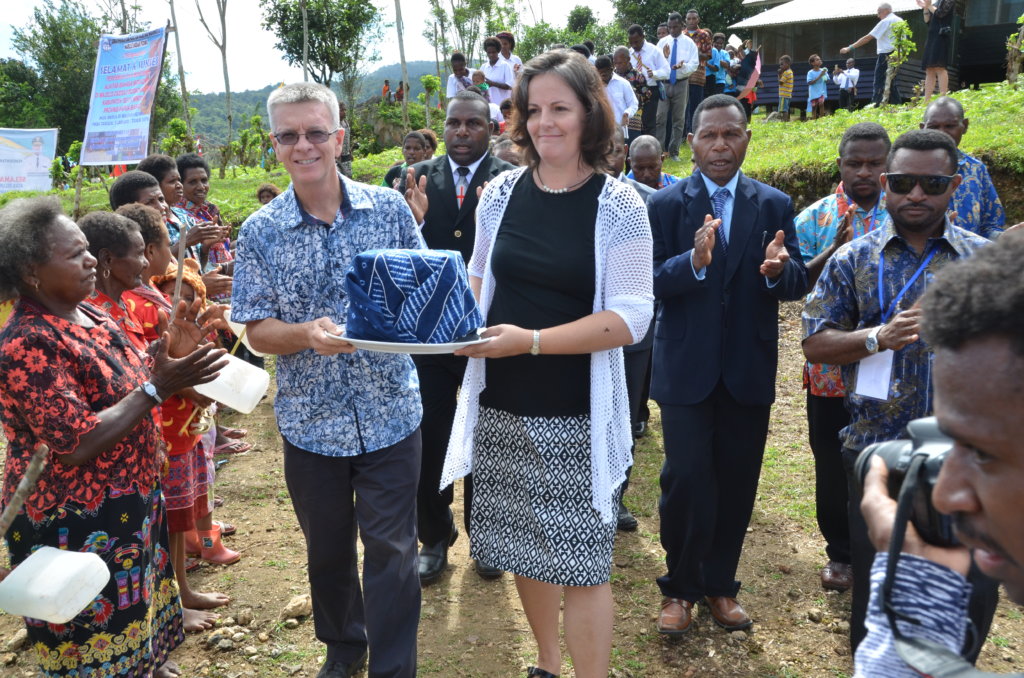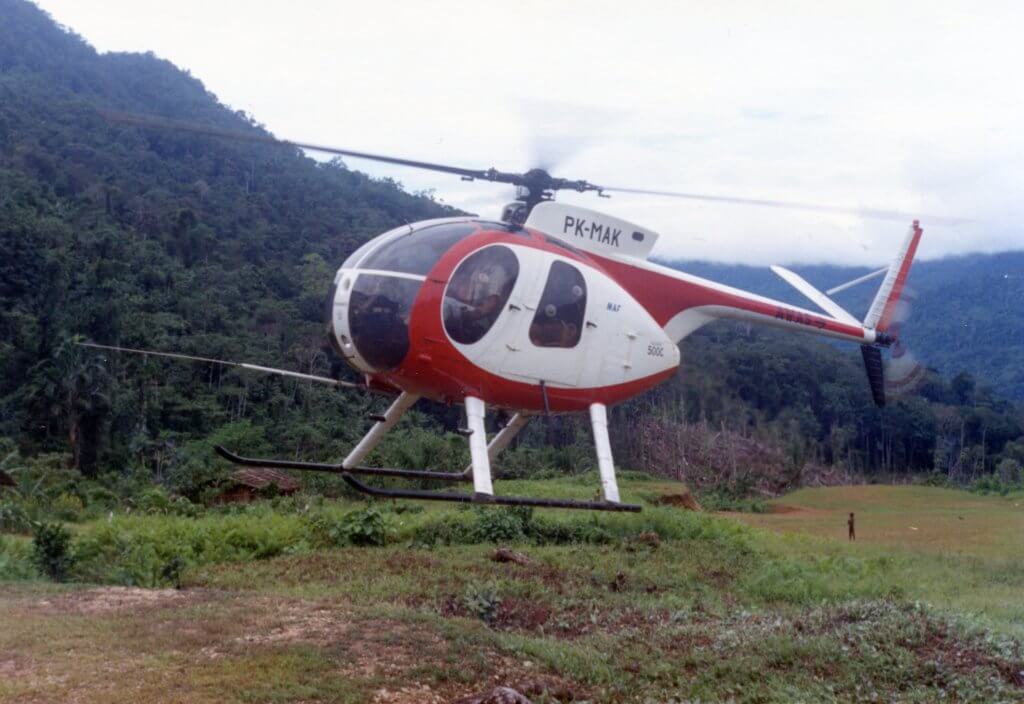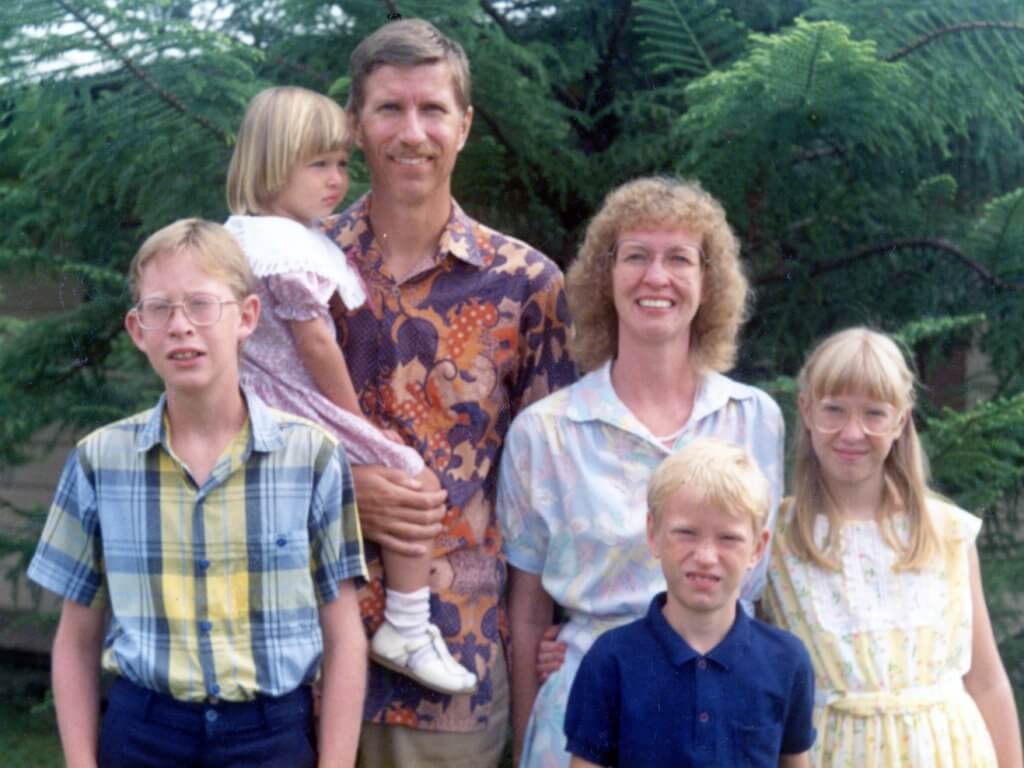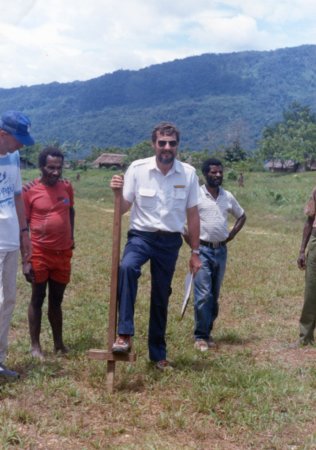Bringing a New Testament to the Moskona people.
“These are wonderful words! I have never understood what they were supposed to mean but now in my language they are so clear — so beautiful! The people in the village will be able to understand this at last! This is so good I don’t want to stop reading!”

A woman from the Moskona tribe of Papua, Indonesia, had just reached the end of a translation check on the book of James. She moved so quickly during the read-through the Bible translators wondered if they’d offended her in some way! But her comment revealed that her speed was just excitement in disguise—the joy of experiencing God’s words in her own language for the first time.
After all of the checks were completed and the printing was done last year, the northern Moskona people no doubt had similar experiences after they received the entire New Testament. A previous version had combined two different dialects, neither one belonging to the northern Moskona, and it was difficult for them to understand.

When Wycliffe missionaries Andrew and Debbie Abbott arrived to work with the Moskona in 2006, they encountered a church with several challenges, including leaders who were semi-literate and a congregation with a poor understanding of the Bible. They began teaching literacy classes, chronological Bible teaching, and Sunday school classes.
“During the literacy and Bible teaching classes we realized that in order for students to understand the existing New Testament, it needed to be adapted into the dialect of that area,” explained Andy.
But a Bible translation doesn’t happen overnight, nor does transformation. What were the steps that needed to happen before this day could become a reality?
A strange arrival
Fifty feet off the ground, in the treetops of the thick, jungle canopy, Moskona women were making breakfast over a firepit in the floor of their tree houses. All cooking stopped as a soft whirring sound began in the distance and grew louder and louder overhead, making their tree houses sway. Those who were able traveled down handmade ladders to see this strange creature that looked like a giant dragonfly.

The MAF helicopter lowered through an opening in the canopy and landed on the jungle floor. John Hook, an MAF pilot, was at the controls. John Price, a TEAM missionary was seated next to him. Hook landed on the jungle floor momentarily, and Price hopped out. He would explore the area on foot to discover if a group of Moskona lived in the area, and John would return for him later.
Survey flights like these happened over and over again to map out the areas where the Moskona lived. In the early 80s, the MAF helicopter served the Price family, and missionaries from the Hatam people as well, who were working to reach the Moskona with the gospel.

John Price, his wife, Linda, and their four young children, were highly dependent on MAF during their 10 years in the rugged, isolated Bird’s Head region of northwestern Papua. MAF flights brought in food, mail, medical supplies, and building materials. The Prices lived primitively in a home constructed of bark, bamboo poles, and a corrugated metal roof. They were there to support the Hatam missionaries, learn the Moskona language, develop a writing system, and begin translating the Bible.
The Moskona wanted to hear what the Hatam missionaries had to say about the gospel, so they moved together and formed new villages.


“During those early years whole villages came to know Jesus as Savior,” explained John Price. “In areas where the gospel took hold, the old cycle of constant revenge killings was broken, and ceremonies of fetish burnings took place.”
The landscape was so rugged—alternating steep hills and valleys one right after another, like an egg carton, covered with jungle—it was difficult to find suitable places for airstrips. Eventually, three areas were found but only on the outskirts of the Moskona area. MAF did airdrops of rice and tools to encourage construction and, after several years, Mesina, Meyerga, and Mouyeba strips were opened.
“Hatam health workers were able to visit and live in the Moskona villages with the Hatam missionaries,” added Linda. “The presence of airstrips has allowed the Indonesian government to open health posts in villages as well, where they both teach and treat the people.”
MAF would go on to serve these areas with a fixed-wing Cessna, as well as the helicopter, from a single-pilot base in the village of Manokwari.
Phil Nelson was one of several MAF pilots that came after the Hooks and who were based in Manokwari.
“I flew to Mouyeba and Mesina, about once a week each,” said Phil. “Most of my flights were to help the indigenous people. I carried passengers and cargo, which includes supporting education, health, the government, community development and the national church.”
During the 90s, and into the early 2000s, there were no missionaries based in Mouyeba. The Moskona church was being overseen by TEAM missionaries who lived in Testega, and an SIL couple in Manokwari. Together these couples worked on adapting the Bible from the Testega dialect of the Meyah language into the Moskona language, but they worked with language helpers from the area of the Moskona closer to the coast. This dialect of Moskona was different enough that it was difficult for the northern Moskona people to understand.
After Phil there were other MAF pilots and families, and finally, the Abbots arrived in Mouyeba in 2006.
The pieces add up
The Abbotts witnessed the fruit of their work a dozen years later when they took part in a joyous ceremony dedicating the northern Moskona New Testament. MAF airplanes brought the Bibles and church leaders. There was a grand celebration that went on for several days and nights.
“We are extremely grateful for the many years of ministry that MAF has had among the Moskona people, said Andrew Abbot. “Due to the isolation of the Moskona it would have been extremely difficult, if not impossible, for the gospel to be brought to them without mission aviation.”
“Thank you for your commitment to pray and give financially to this ministry,” added Debbie, “so that many more can hear the life-giving message of salvation through our Lord Jesus.”


